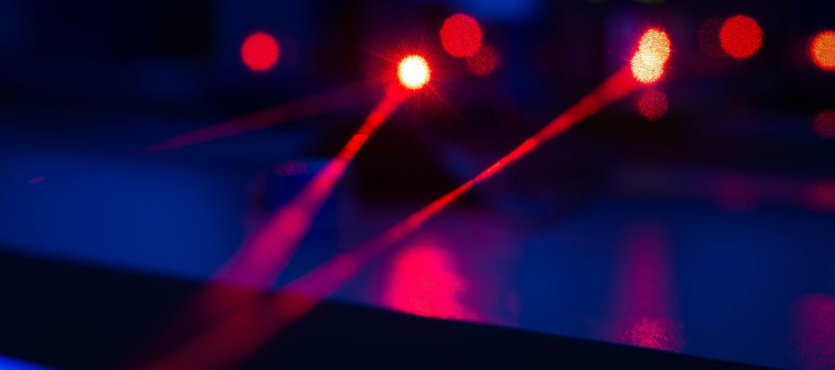Laser tag is a popular recreational activity that combines elements of tag and hide-and-seek with advanced technology. This game, enjoyed by people of all ages, involves players wearing infrared-sensitive vests and wielding infrared-emitting phasers to “tag” opponents. But what exactly goes into the mechanics and science of laser tag? Let’s explore the intricate systems that make this thrilling game possible.
Infrared Technology
At the heart of laser tag technology is infrared (IR) light, a type of electromagnetic radiation with longer wavelengths than visible light, making it invisible to the human eye. This unique property of infrared light is harnessed in laser tag to create a seamless and exciting gameplay experience. The “guns” used in laser tag, commonly referred to as phasers, are equipped with infrared LEDs (Light Emitting Diodes). When a player pulls the trigger, the LED emits a pulse of infrared light. This pulse is typically encoded with information such as the player’s ID and the time of the shot. Players wear vests fitted with infrared sensors, which detect these infrared pulses. When a sensor detects a pulse, it registers a “hit,” and the vest’s electronics update the player’s status accordingly.
The infrared pulses emitted by the phasers are not just simple beams of light; they carry encoded information. This information typically includes a unique identifier for each player, the exact time the shot was fired, and additional game data depending on the mode being played. The sensors on the vests decode this information upon detecting a pulse, ensuring accurate scorekeeping and game management. This sophisticated encoding and decoding process is what makes laser tag an intricate and engaging activity.
Radio Frequency Communication
In addition to infrared technology, laser tag systems use radio frequency (RF) communication to manage game data. Each phaser and vest is equipped with RF transmitters and receivers. These devices communicate with a central game system, transmitting and receiving data about hits, scores, and player statuses in real-time. This allows for immediate feedback on performance and centralized control of game dynamics, ensuring fair play and accurate scorekeeping. The central game system processes the data received from all players, updating scores and tracking game progress to keep the game running smoothly.
Computerized Scoring Systems
One of the most exciting aspects of laser tag is the computerized scoring system, which keeps players engaged and competitive. When a player’s vest sensor registers a hit, it sends a signal to the central game system via RF communication. The central system then calculates the player’s score based on the number of hits registered and the game mode rules. Scores are updated in real-time and displayed on screens within the arena, keeping players informed and motivated. Different game modes, such as Team Deathmatch, Capture the Flag, and Free-for-All, each have their own scoring rules, adding variety and challenge to the gameplay.
Advanced Features and Enhancements
Modern laser tag systems incorporate various advanced features to enhance gameplay and create a more immersive experience. Phasers often include multiple firing modes, such as rapid fire, single shot, and burst mode, allowing players to choose their preferred style of play. They also feature sound effects and LED lights to simulate the look and feel of real laser battles. Vests may include vibration feedback to alert players when they are hit and indicators that show players their remaining health and ammunition, adding a strategic element to the gameplay.
The Arena: Creating an Immersive Environment
The design and layout of a laser tag arena play a crucial role in the overall experience. A well-designed arena provides a challenging and engaging battleground for players. The arena is often comprised of corridors, buildings, and rooms that allow for strategic planning and dynamic gameplay. Players can charge through open areas, climb walls, hide, and defend key positions. Themed decorations and props create a realistic and engaging atmosphere, transporting players to a different world and enhancing the overall experience. Some arenas include interactive elements such as moving targets, light-up objectives, and sound effects to add an extra layer of excitement and challenge.
Gearing Up for Laser Tag
To make the most of your laser tag experience, consider wearing comfortable clothing and closed-toe shoes suitable for running and quick movements. Staying hydrated is essential, especially during intense gameplay, so bringing water bottles is a good idea. Arriving early allows time for check-in and the safety briefing, and encouraging teamwork and communication among your team members can enhance the overall experience.
The Thrill of Laser Tag
Laser tag is a sophisticated blend of science and technology that creates an immersive and exhilarating experience for players of all ages. The combination of infrared technology, radio frequency communication, computerized scoring systems, and advanced features makes laser tag a unique and engaging activity. Whether you’re a seasoned player or new to the game, understanding the mechanics and science behind laser tag can enhance your appreciation and enjoyment of this exciting activity. For more information or to book your session, visit Combat Laser Tag.

